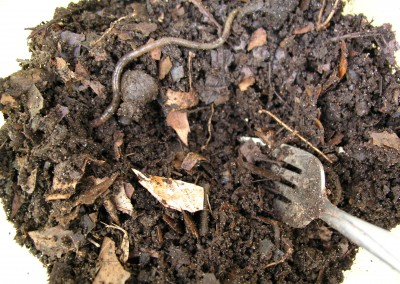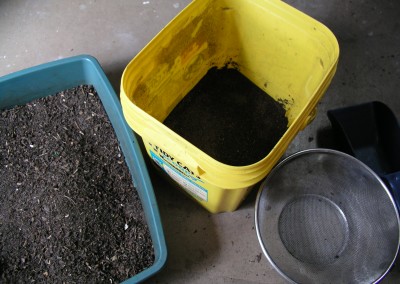Organic gardening simply means no synthetic pesticides or fertilizers.
Instead we build the soil with organic amendments to improve fertility; use only natural pest control products; rotate our crops; implement companion planting and take a more hands on approach to gardening.
To build the soil, use supplements such as, blood meal, bone meal, greens, compost and manure for example.
There are also organic compounds made by chemists using micro nutrients and natural things that are safe to use and supply the needed building blocks. Green World Path is one of those companies (located right here in Brooksville FL.) who manufacture organic soil builders, pest control, fungicide and more. I use and sell most of their products.
There are many organic fertilizers available from reputable companies as I mentioned the one earlier. Fish emulsion, blood meal, seaweed extract and chemically compounded total fertilizers to name a few. These actually replenish the soil with the microorganisms and trace elements that they need. They help with the natural balance and strengthens the plants immune system so they can fight off diseases and viruses or an attack from pests. Keeping things in balance naturally allows good and bad to work together.
Starting with good soil is a must. Incorporate compost, manure, chopped leaves or any organic matter into the soil a month or so before planting.This will break down and release the good stuff to give you rich healthy soil that will hold moisture better and have good drainage. Don’t walk in your garden it compacts the soil. Plan to have rows to walk on or where you can reach in from the sides. Loose soil allows the roots to grow deep and wide for healthy plants. Compact soil stunts growth and puddles which causes bad drainage.
After you have planted, continue to fertilize with fish emulsion or other organic products and side dress with compost.
Organic pest control also means hand picking bugs and worms off. I go out every morning and pick off tomato worms stink bugs etc. It is not ideal but it helps keep them under control. There are also Beneficial bugs like wasps, ladybugs and bees they eat the bad ones. That is another reason you do not want to use pesticide it kills good bugs too. Planting marigolds and certain herbs deter some bugs naturally and attract beneficial ones.
Companion planting is another method. Growing things side by side to help each other. Planting carrots near tomatoes for example. Carrots and tomatoes need different nutrients and release different nutrients they both benefit by taking from the soil what they need and put back what the other takes out. Throw basil into the mix and it will help attract beneficial bugs for the tomatoes and deter the bad.
Homemade Organic Disease & Insect Sprays
Guest Author – Jessica Carson INSECT CONTROL Insecticidal/Garlic/Capsaicin Spray To control aphid, mealy bug, cabbage worm, white fly, and even spider mites, this all-purpose insecticidal soap spray is very effective. This is good for most all types of plants but be sure to do a test spray on some hidden leaves first, to make sure your plant is not too sensitive.
- 3 cloves garlic, finely crushed (or equivalent in garlic oil or juice)
- 1 Tablespoon vegetable oil, any kind will do
- 3 Tablespoons Tabasco or other hot pepper sauce (the hotter the better)
- 4 cups water
- 1 teaspoon plain liquid dishwashing soap, such as Ivory
- Combine the crushed garlic, cooking oil and hot sauce and let stand overnight.
- Strain and add the water.
- Add the dishwashing soap and stir gently.
Pour into a hand sprayer and spray the tops and especially the undersides of the leaves weekly or as needed. Store in a closed container in the refrigerator.
COMBINED INSECT AND DISEASE CONTROL Neem Oil Spray to Control Insects and Disease Neem oil is highly effective against many types of insects and plant diseases. It is non-toxic to birds, mammals, honeybees and ladybugs. It is toxic, however, to fish, so do not use around ponds, streams or other waterways, and keep from going down storm drains. Neem oil can be purchased at most garden supply stores, health food stores and on line. Several lines of commercial sprays are now available, also, so read the labels of sprays available in stores.
- 1 teaspoon neem oil
- 4 cups water
- 1 teaspoon dishwashing soap
Combine oil, soap and water in a hand sprayer and mix gently. Spray tops and bottoms of leaves thoroughly every 5-10 days until pests are gone. Note: this spray will not cure a fungus on already effected leaves but will keep it from spreading. Remove badly diseased leaves and dispose of in your garbage. Wash hands thoroughly and be sure to clean your pruners or scissors in alcohol or bleach to help kill any virus or spores.
DISEASE CONTROLS Baking Soda Spray for Blight, Leaf Spot and Mildew A spray made from baking soda is a great all-around disease spray. It is good for treating anthracnose, tomato blight, leaf blight, leaf spots, and powdery mildew.
- 1 Tablespoon baking soda
- 2 1/2 Tablespoons vegetable oil
- 1 gallon water
- 1 teaspoon plain dishwashing soap (such as Ivory or Dawn)
Mix thoroughly. Pour into your sprayer and spray top and bottom of leaves thoroughly, as well as the surrounding soil. Mix or shake often while spraying to keep all ingredients thoroughly mixed. Repeat every 5-7 days as needed.
Milk Spray for Mildew Milk contains enzymes and sugars which makes the surfaces of leaves less susceptible to mildew. This spray works well on squash, pumpkins, cucumbers, melons, tomatoes, asters and zinnias. Mix equal parts milk and water and place in your sprayer. Spray tops and bottoms of leaves every 3-4 days at first sign of disease or weekly as a preventative.


